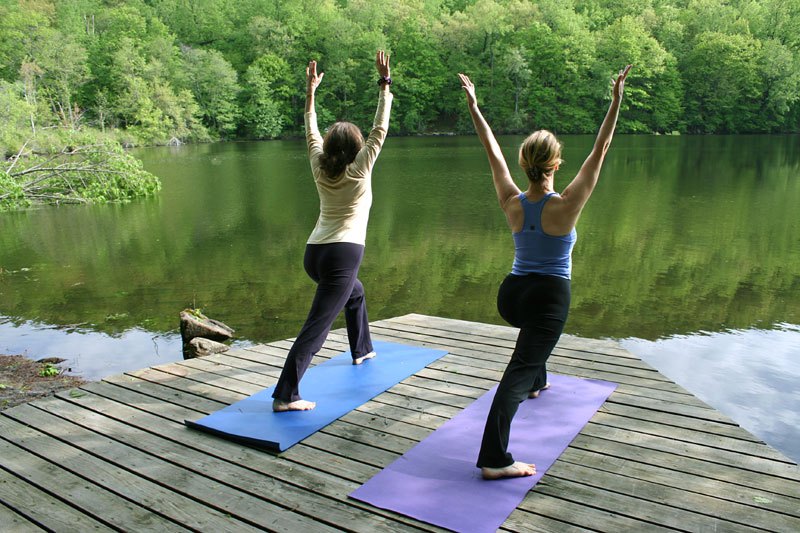
Yoga Styles Taught through Alligator Healing Arts Yoga:
All sessions taught through AHA! Yoga focus on the fundamentals of yoga postures, including standing, sitting, twisting, and supine poses. The emphasis always rests on doing what is right for your individual body and mind that particular day. Props such as blocks, straps, cushions, and even chairs are often used to meet your specific body’s needs. Individualized modifications ensure each posture is steady and firm, yet comfortable and safe, allowing you to get the physical and mental benefits of each specific pose. Classes follow the Kripalu style of yoga, while integrating a few Iyengar-inspired techniques (see descriptions below). Additionally, a meditation hour, or a more vigorous, movement-oriented class called “Vinyasa Flow” is also available by request (minimum of 3 students required). Once a week there is also a Restorative Yoga class; this focuses on opening and healing our bodies through rest, much like grown-up nap time.
KRIPALU YOGA: Kripalu Yoga is a mindful practice of physical yoga postures, breathing exercises, and relaxation techniques for integrating body, mind, and spirit. It is especially valuable for those new to yoga, as it helps students become aware of their bodies and inner states of mind. It starts with postural alignment, breathing techniques, and the coordination of breath and movement. The postures are held for a short time, and then for longer intervals as the student progresses. A Kripalu yoga class generally starts with centering and breathing, then includes a short period of warm-up movements to safely and gently prepare the body. These are followed by a sequence of yoga poses, which form the longest portion of class time. Each session ends with deep relaxation, where students learn to release tension in the body and draw the mind towards inner peace. Continued practice of Kripalu yoga can foster states of serene awareness and appreciation. Kripalu yoga is known as a yoga of inquiry and exploration because it is a very personalized practice. Always ask the question, “What works for me, for my body, today?”
IYENGAR-INSPIRED YOGA: This form of yoga has been described as meditation in action, and is a very detailed-oriented practice. The emphasis on detail is an easy, refreshing way to learn how to be present in the moment and silence—or at least lessen—mind-chatter. The focus is on proper physical alignment of the body; the components of each pose are practiced in detail, and final poses are held for a longer period of time than in many other yoga styles. There is initially a focus on standing postures, and then forward and back bends, twists, and restorative poses are added. Many yoga props (soft bolsters, straps, blocks, blankets) are used, so that rather than force your body into an uncomfortable position, you gently adjust the pose to fit your body. When the students are ready, easy inversions (such as bridge pose) and shoulder balances are introduced because of their many therapeutic benefits.* Practicing Iyengar-inspired yoga first places awareness on the body, and provides the student with a firm knowledge of classic yoga poses. With regular practice, it can expand attentiveness to other layers of the self, helping the student cultivate calm, patience, and presence. This form of yoga was introduced to the West by B.K.S. Iyengar, and remains one of the most widely respected and recognized classical approaches to yoga. This is a perfect place for beginners to start, as it provides the student with knowledge of tried and true foundations of basic yoga practice.
You can do yoga, and enjoy it!
Still have questions? Contact us at alligatoryoga@gmail.com
And, now, the study of yoga begins together. —Yoga Sutra 1.1
For class schedules, private appointments, free group class, pricing, and contact information, see our web page, “Classes.”
*Editor’s note: AHA Yoga does NOT teach headstand (Salamba Sirasana/Sirasana), and only incorporates half shoulder stand (Ardha Sarvangasana) for intermediate students, due to increased risks of pain, discomfort, and injury. Benefits of yoga asana practice can be gained through safer, easier alternatives. For more on advances in yoga literature and science and current debates see: the article and compiled research by Matthew Remski.


